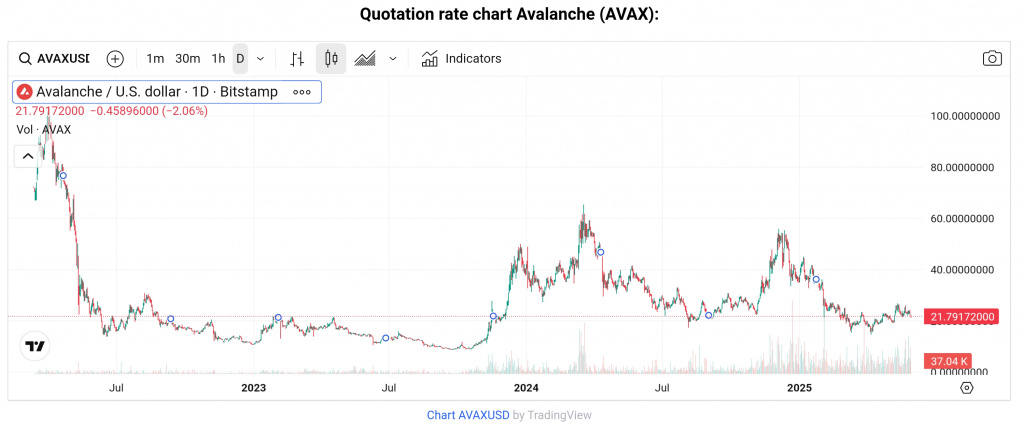Avalanche (AVAX) is a blockchain platform designed to provide a high-performance, scalable, and customizable ecosystem for building decentralized applications (DApps) and blockchain networks.
Avalanche aims to overcome the limitations of existing blockchain platforms by offering high throughput, low latency, and robust security.
Alternative mechanisms and features
Avalanche uses the Avalanche consensus protocol, which is based on a novel consensus mechanism called “Avalanche consensus”.” This protocol enables fast validation of transactions and consensus between network participants.
In addition, Avalanche enables the creation of user-defined blockchain networks called “subnets”,” each with its own rules and characteristics. The subnets can be tailored to specific use cases and applications.
Blockchain
Avalanche’s focus on high throughput, low latency and customizability makes it an interesting option for developers and projects looking to create scalable and efficient blockchain applications.
Developers can create their own blockchains on the Avalanche platform, each with their own governance, tokenomics and features. This allows for greater flexibility and customizability compared to traditional monolithic blockchains.
Avalanche is designed to facilitate interoperability between different blockchain networks so that assets and data can be seamlessly transferred between subnets and other networks.
The use of smart contracts and DApps is also supported, allowing developers to create and execute programmable contracts using popular programming languages such as Solidity.
Avalanche Token (AVAX)
AVAX is the native utility token of the Avalanche network. It serves various purposes within the ecosystem, including paying transaction fees, participating in network management and securing the network through staking.
AVAX token holders can participate in network security and consensus by staking their tokens. Stakers can receive rewards for their contributions, and users who don’t wish to operate their own nodes can delegate their tokens to validators.







